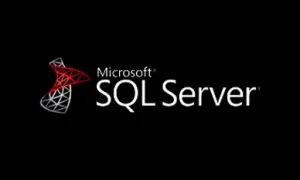
Module 1 – Introduction: SSRS and the SSRS-verse
- Lesson 1: What Is SSRS and How Is It Used?
- Lesson 2: SSRS and Business Intelligence
- Lesson 3: OLTP and OLAP
- Lesson 4: SSRS Architecture and Tools
Module 2 – Data Objects
- Lesson 1: Data Sources
- Lesson 2: Data Sets
Module 3 – Building and Deploying a Basic Report
- Lesson 1: Report Designer Solutions
- Lesson 2: Data Binding
- Lesson 3: The Tablix Table and List
- Lesson 4: Simple Formatting
- Lesson 5: Working with Expressions
- Lesson 6: Using Grouping for Formatting and Aggregation
- Lesson 7: Overview of Report XML
- Lesson 8: Deployment to the Web Portal
- Lesson 9: Report Designer vs. Report Builder
Module 4: Working with Summarized Data
- Lesson 1: Hierarchical Group Objects
- Lesson 2: Expression Scope
- Lesson 3: Document Maps
- Lesson 4: Recursive Hierarchies
- Lesson 5: The Matrix Data Region
- Lesson 6: Adjacent Groups
Module 5: Working with Parameters
- Lesson 1: Query Parameters and Report Parameters
- Lesson 2: Server-Side vs Client-Side Filtering
- Lesson 3: Parameter Dropdowns
- Lesson 4: Cascading Parameters
- Lesson 5: Optional Parameters
Module 6: Advanced Parameters and Bookmarks
- Lesson 1: Drilldown
- Lesson 2: Drillthrough
- Lesson 3: Using Parameters to Sort
- Lesson 4: Using Parameters to Show/Hide Matrix Groups
- Lesson 5: Subreports vs Nested Data Regions
- Lesson 6: Go to Bookmark Action
Module 7: Formatting
- Lesson 1: Headers and Footers
- Lesson 2: Rich Text Formatting
- Lesson 3: Placeholders
- Lesson 4: Conditional Formatting
- Lesson 5: Repeating and Freezing Column Headers
- Lesson 6: Formatting for Excel
Module 8: Data Visualizations
- Lesson 1: Charts
- Lesson 2: Databars
- Lesson 3: Sparklines
- Lesson 4: Gauges
- Lesson 5: Indicators
- Lesson 6: Maps
- Lesson 7: KPI Reports
Module 8: Web Portal Basics
- Lesson 1: Web Portal Overview
- Lesson 2: Creating Folders
- Lesson 3: Managing Shared Objects
- Lesson 3: Web Portal Report Properties
- Lesson 4: Report Comments
- Lesson 5: Branding the Web Portal
Module 9: Caching and Snapshots
- Lesson 1: Report Processing Steps
- Lesson 2: Caching Reports & Filtering
- Lesson 3: Snapshot Reports & Filtering
- Lesson 4: Historical Snapshots
Module 10: Automating Report Execution and Distribution
- Lesson 1: Simple Subscriptions
- Lesson 2: Data-Driven Subscriptions
- Lesson 3: Shared Schedules
Module 11: Administering Reporting Services
- Lesson 1: Configuration Managers
- Lesson 2: Securing the Web Portal
- Lesson 3: Monitoring Performance
Module 12: Mobile Reports
- Lesson 1: Mobile Reports Overview
- Lesson 2: Understanding and Preparing Mobile Reports Data
- Lesson 3: Navigators and Visualizations
- Lesson 4: Parameters and Drillthrough
The primary audience for this course is database professionals who want to learn about creating reports. Primary responsibilities will include implementing reports and mobile reports. The secondary audiences for this course are power information workers.
In addition to their professional experience, students who attend this training should have technical knowledge equivalent to the following course:
SQL101: Introduction to Transact SQL
or
After completing this course, students will be able to:
• Describe key features of data modelling within business intelligence
• Describe various report services data sources and how these are configured
• Create reports with report designer and/or report designer
• Configure reports with report designer and/or report builder
• Create SQL Server mobile reports
 Print Page
Print Page
